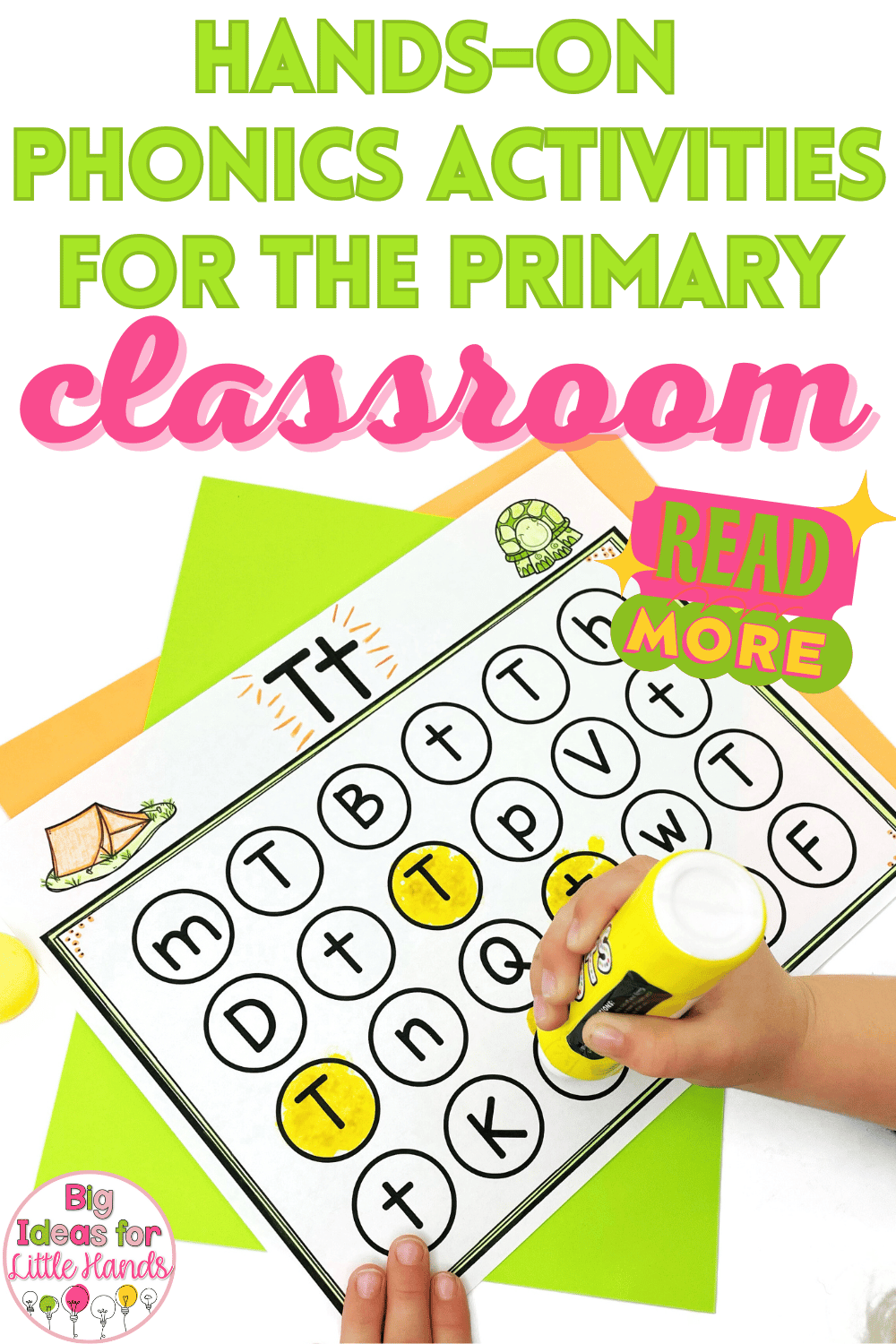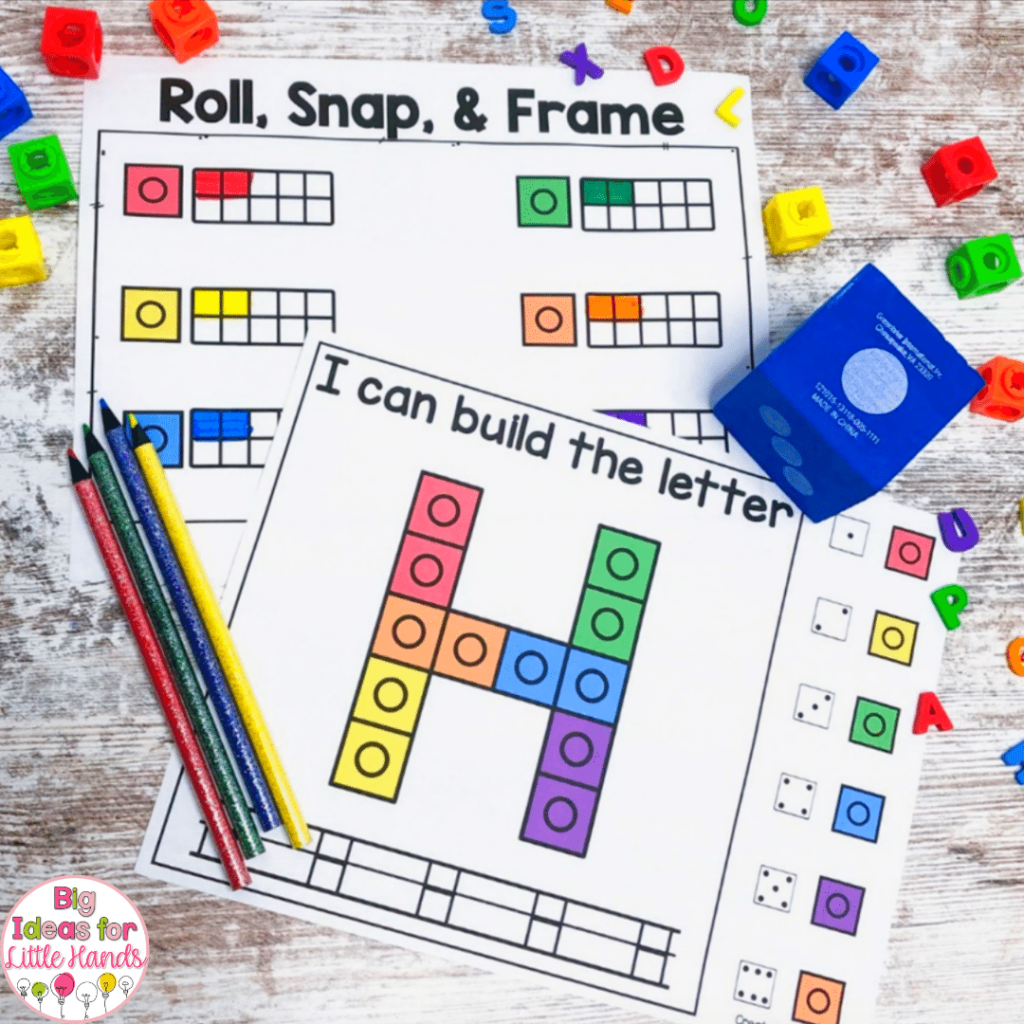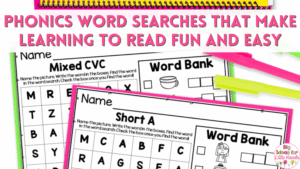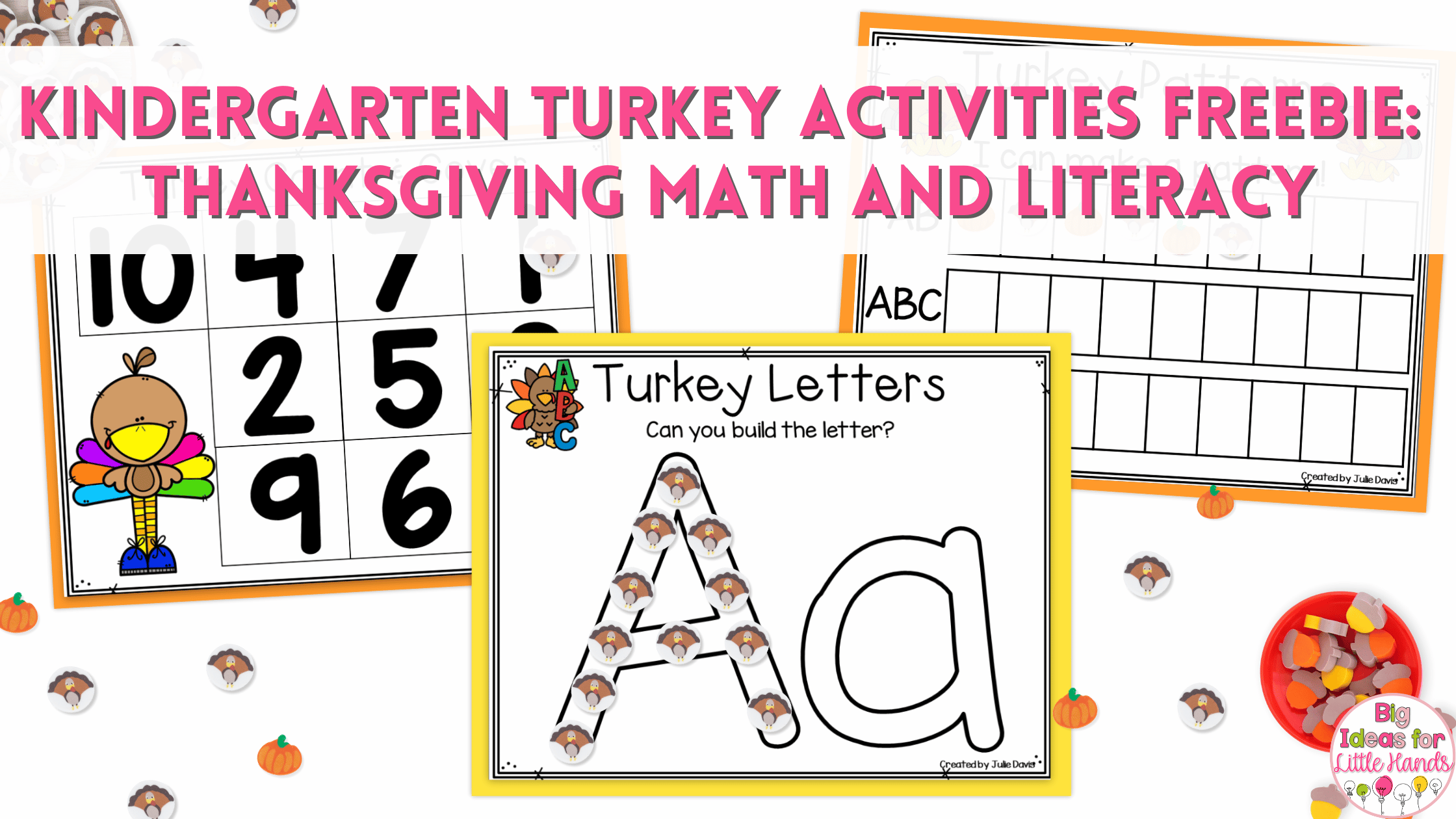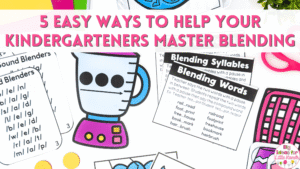Hands-on learning is a big deal in my world! I am a huge advocate for taking an active learning approach in my teaching and providing opportunities for hands-on learning as much as possible. You guys already know how much I love using manipulatives to teach math, but did you know you can use those same manipulatives to teach phonics lessons as well? Today, I am so excited to show you how to use my favorite manipulatives for hands-on phonics activities!
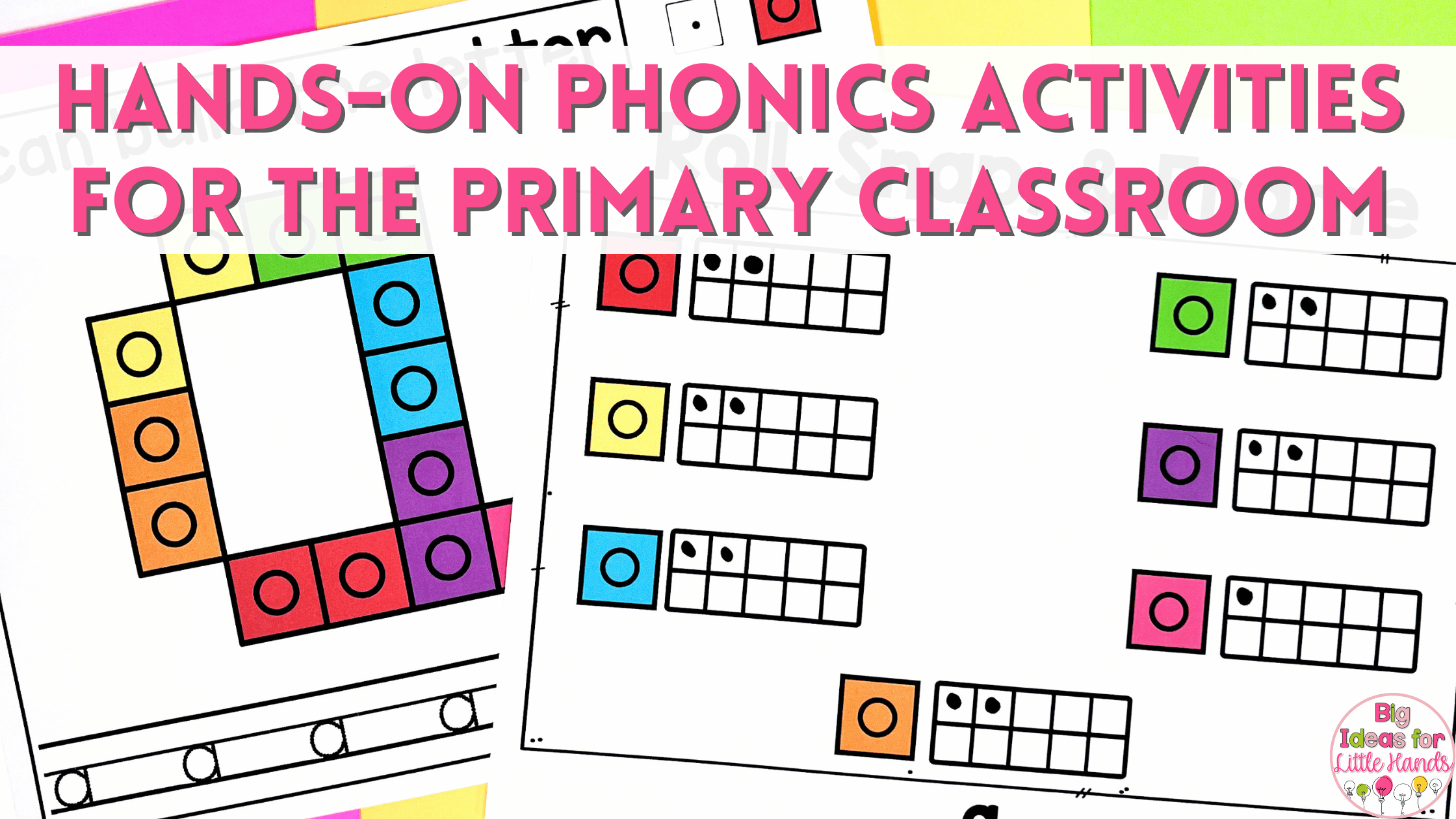
Manipulatives Make Learning Fun
If you teach young students, you already know how crucial it is to grab their attention if you want them to retain their learning.
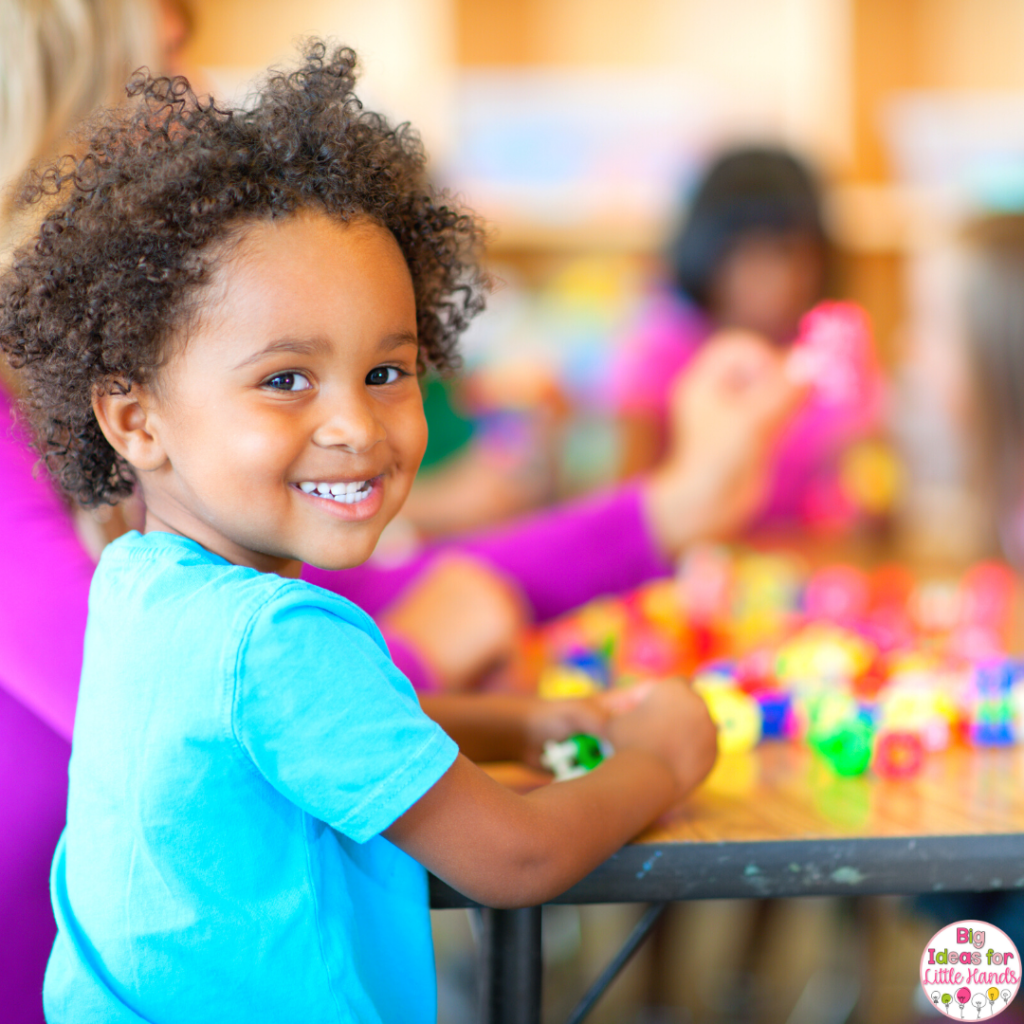
Young students have shorter attention spans, and it’s much easier to teach them a new skill if they are interested in what we are putting out there. This is where manipulatives come in!
Manipulatives resemble building blocks and other familiar play toys, making the activity instantly more appealing and exciting.
I’m a firm believer in using manipulatives because I see how much more my students get from our lessons when we include them.
For this reason, I use them in both my math and phonics instruction! I recommend 3 simple manipulatives that will serve you well in both areas of your classroom.
I promise it will be worth every penny! Using manipulatives for hands-on phonics activities will engage your students and transform your teaching!
Use Mini Erasers, Pom-Poms, and Bingo Chips For Repetition
Just like in my math lessons, pom-poms, mini erasers, and bingo chips are true classroom heroes for hands-on phonics activities! They are great for “roll and cover” types of activities that will allow lots of repetition and practice of a particular skill. When young students are learning to recognize letters, letter sounds, and word families, these are especially helpful! If you go the mini eraser route, be sure to check the Target Dollar Spot and Michaels! They always seem to have a fun, new set every time I stop in there!
I made a whole line of “Cover It Up” resources for practicing phonics skills in the classroom. These worksheets are perfect for use with pom poms, mini erasers, or bingo chips and help students work on so many phonics skills! This mega bundle covers:
- Letter Recognition
- Beginning Sounds
- Short A Word Family
- Short E Word Family
- Short I Word Family
- Short O Word Family
- Short U Word Family
- Digraphs
- S Blends
- R Blends
- Long A
- Long E
- Long I
- Long O
- Long U
No matter what skill you are looking to target with your group, this bundle will cover just about everything! I especially love to use these activities as warm-ups for my students during small groups. I lay the worksheets out, and my students jump right into action with these hands-on phonics activities while I work on getting our next activity set up.
The simple format of these worksheets is easy for my students to understand and foster independence, which is always a big win in my book! These activities can be matched to any theme simply by swapping out the color of the bingo chips or type of mini erasers. Use these all year long for reviewing phonics skills in your classroom!
Use Pattern Blocks For Phonics Activities
I think most people automatically associate pattern blocks with math, and while they are fantastic for making math fun, they can also be used for teaching letters! I love to use pattern blocks as a way to help my students learn to recognize and build letters. Using pattern blocks to practice building letters is a really fun twist on more classic letter formation techniques and will put those pattern blocks to good use!
To help put this into action, I created these Spin and Match Alphabet Pattern Block Centers. These fun activities will help your littles recognize uppercase and lowercase letters, and as a bonus, get practice with shape recognition and counting as well!
Students will spin the spinner, place a matching pattern block down, and repeat until the letter is filled in. Once that is complete, students will identify the letter and even count how many of each shape they used. This is a great activity for centers and small groups that will incorporate important phonics and math practice.
Another great way to use pattern blocks is with my Roll and Match Alphabet Pattern Block Centers. These follow the same idea as the spin and match set, except students will use dice. Again, this is a great way to incorporate counting and shape recognition with letter recognition. I am always a fan of any activity that targets multiple learning goals, and these resources do just that!
As a bonus, both of these center sets come with a coloring page option if you would rather have your students color in the shapes rather than using the physical pattern blocks. And . . . if you have a pattern block die cut in your workroom, you can turn this page into a cut and paste activity too!
Try Snap Cubes To Practice Building Letters
Yes, even snap cubes have a place in phonics instruction! I’m sure you already know these are great for learning how to count and compare numbers, but they are also a great tool for learning to form letters. While my students get plenty of practice in using good ol’ pencil and paper, sometimes it can be fun to build letters in other ways. In my classroom, I love using snap cubes for this!
I created a fun bundle of Roll, Snap, and Frame activities dedicated to letters. In this set, students will use dice to roll a colored snap cube.
The student will then find a matching snap cube and place it on the mat.
Next, they will color in one square on the ten frame recording sheet beside the matching color. Students will keep rolling, matching, and coloring until the mat is full and a letter is revealed!
This is a really fun way to practice building letters and even sneak in some counting practice as well.
Snap cubes are also useful for getting some letter recognition and letter sound practice in my Snap Cubes Centers. This engaging resource asks students to match snap cubes by code to reveal a fun, seasonal picture. These activities focus on letter recognition and letter sounds for hands-on phonics activities, but as an added bonus, they also include some math skills! These are a great resource to add to your center rotation and help your littles master these tricky skills!
Phonics Activities Are Made Easy With Manipulatives
If you teach primary grades, you already know how engaging hands-on activities are to your students! By keeping your classroom stocked with just a few of these simple manipulatives, you will be able to incorporate more hands-on phonics activities with less effort. I love knowing that these materials can be used in multiple ways to teach a variety of skills! If you’re only going to invest in a few, I highly recommend these versatile products for endless hands-on learning fun!
And . . . if you want to add more hands-on phonics activities in your classroom, check out these ready-to-use resources in my Teachers Pay Teachers store.
Looking for More?
Be sure to check out these posts next for more hands-on learning fun!
Save These Phonics Activities For Later
Save these ideas for using hands-on phonics activities on your favorite classroom Pinterest board, and come back the next time you need some new hands-on activities for your primary classroom.
